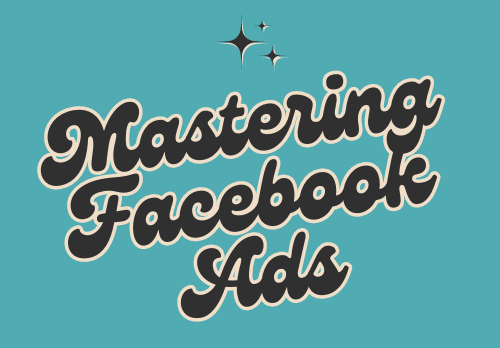Mastering Facebook Ads for Affiliate Marketing
How to Optimize ROI
Facebook ads are a powerful tool for affiliate marketers looking to drive traffic, leads, and conversions. However, creating ads that generate a positive return on investment (ROI) requires careful planning, optimization, and constant analysis. In this guide, we’ll dive into the strategies of mastering Facebook ads and maximize your affiliate marketing profits.
We’ll cover the following key areas:
- Best practices for targeting the right audience
- Crafting compelling ad copy
- Analyzing performance with Facebook Pixel
- Retargeting strategies to boost conversions
Let’s dive in!
1. Best Practices for Targeting the Right Audience
One of the most critical aspects of running successful Facebook ads is ensuring that they are shown to the right audience. Facebook offers robust targeting options that allow affiliate marketers to pinpoint their ideal customers. Here’s how to make the most out of Facebook’s targeting capabilities:
a) Use Detailed Demographic Targeting
Facebook allows you to target users based on detailed demographics, including age, gender, income, education level, and more. This precision helps you narrow down your audience to those most likely to be interested in your affiliate offers. For example, if you’re promoting high-end fitness equipment, targeting individuals with higher income levels and an interest in fitness is key.
Pro Tip: Always experiment with different audience segments and avoid making assumptions. Test various demographics to discover which ones convert best for your particular offer.
b) Leverage Interest-Based Targeting
Interest-based targeting on Facebook is highly effective for affiliate marketing. This feature allows you to target users based on their specific interests, such as hobbies, brands, and online behavior. If you’re promoting beauty products, for instance, you can target users who follow beauty influencers or show interest in skincare and cosmetics.
Pro Tip: Use Facebook Audience Insights to research your potential customers’ interests. This tool provides valuable data on what your audience cares about, allowing you to fine-tune your targeting.
c) Custom Audiences for Targeted Ads
Custom Audiences allow you to upload email lists, website visitors, or app users, and target them specifically with your ads. This is a fantastic way to re-engage individuals who have already interacted with your brand but haven’t converted yet.
Pro Tip: Upload a list of your existing customers to create a “Lookalike Audience.” Facebook will find users similar to your current customer base, allowing you to target potential customers who are more likely to convert.
d) Use Lookalike Audiences to Find New Customers
Lookalike Audiences are one the most powerful targeting features for mastering Facebook ads. These audiences allow you to reach new people who are similar to your existing customers, which can increase your chances of converting new leads.
Pro Tip: Start by creating a Lookalike Audience based on your highest-value customers. This way, you can attract potential customers who are most likely to make high-ticket purchases or become repeat buyers.
2. Crafting Compelling Ad Copy
The ad copy is the heart of your Facebook ad. It’s the text that grabs attention, communicates value, and convinces your audience to take action. Crafting compelling ad copy is essential for achieving high click-through rates (CTR) and conversions. Here’s how to do it effectively:
a) Know Your Audience’s Pain Points and Desires
Before writing your ad copy, you need to understand what motivates your audience. What are their pain points, desires, and goals? Your ad copy should speak directly to these needs.
For example, if you’re promoting a fitness program, you might appeal to your audience’s desire to lose weight, gain muscle, or boost confidence. Use language that resonates with their emotions and offers a solution to their problems.
Pro Tip: Start your ad with a hook that addresses a pain point or desire. For example, “Struggling to lose those last 10 pounds? Our fitness program is designed to help you shed fat fast!”
b) Focus on Benefits, Not Features to Master Facebook Ads
It’s easy to fall into the trap of listing features when writing ad copy. However, consumers are more interested in how a product or service will benefit them. Focus on the benefits your product provides rather than just its features.
For instance, instead of saying, “Our supplement contains 50 grams of protein,” highlight the benefit: “Build lean muscle faster with our high-protein supplement.”
Pro Tip: Use bullet points to make the benefits of your product clear and easy to digest. People skim ads quickly, so make your points stand out.
c) Include a Strong Call-to-Action (CTA) to Master Facebook Ads
A well-crafted CTA encourages your audience to take the next step, whether that’s clicking a link, making a purchase, or signing up for a newsletter. Make sure your CTA is clear, direct, and action-oriented.
Some examples of strong CTAs for mastering Facebook ads include:
- “Shop Now and Save 20%”
- “Join Today and Start Your Free Trial”
- “Learn More About Our Exclusive Offer”
Pro Tip: Test different CTAs to see which ones resonate most with your audience. Small tweaks like changing “Learn More” to “Get Started” can have a significant impact on conversions.
3. Analyzing Performance with Facebook Pixel
Once your Facebook ads are live, it’s essential to track their performance to ensure you’re getting a good return on your investment. This is where Facebook Pixel comes in. The Facebook Pixel is a piece of code that you place on your website to track visitors and conversions. It’s crucial for optimizing your campaigns and measuring success.
a) Install the Facebook Pixel on Your Website
Before you can start tracking conversions, you need to install the Facebook Pixel on your website. Facebook provides step-by-step instructions for adding the Pixel to various platforms, including WordPress, Shopify, and custom websites.
Once the Pixel is installed, it will track users who visit your site, make purchases, and take other actions that are valuable to your business.
Pro Tip: Set up custom events within the Pixel to track specific actions, such as when a user adds a product to their cart or completes a purchase. This allows for more granular tracking of your campaign performance.
b) Track Key Performance Metrics
With the Facebook Pixel in place, you can monitor the performance of your ads in real-time. Some key metrics to track include:
- Click-through rate (CTR): The percentage of people who click on your ad after seeing it. A higher CTR indicates that your ad copy and creative are resonating with your audience.
- Conversion rate: The percentage of people who complete a desired action, such as making a purchase or signing up for a newsletter, after clicking on your ad.
- Cost per conversion: The amount you’re spending to generate each conversion. Reducing this number is essential for improving ROI.
Pro Tip: Use Facebook Ads Manager to view detailed reports on your campaigns. This will help you identify which ads are performing best and where improvements can be made
c) Optimize Campaigns Based on Data
The data you collect from Facebook Pixel should guide your decision-making. If a particular ad isn’t performing well, consider adjusting the targeting, ad copy, or creative. A/B testing different elements of your ads is a great way to find out what works best.
Pro Tip: Regularly review your campaign performance and adjust your bids to ensure you’re getting the best results for your ad spend. For example, if your CTR is high but your conversion rate is low, you might need to refine your landing page.
4. Retargeting Strategies to Boost Conversions
Retargeting is one of the most effective strategies for improving the profitability of your Facebook ads. Retargeting allows you to show ads to people who have previously interacted with your brand but haven’t converted yet.
a) Retarget Website Visitors
People who visit your website but don’t make a purchase are prime candidates for retargeting. You can use Facebook’s Custom Audiences feature to retarget these users with ads that encourage them to complete their purchase.
For example, if a user viewed a product on your site but didn’t buy it, you can retarget them with an ad that offers a discount on that product.
Pro Tip: Use dynamic ads to show users the exact products they viewed on your site. This personalized approach can significantly increase conversion rates.
b) Retarget Cart Abandoners
Cart abandonment is a common issue for e-commerce businesses, but it also presents a great opportunity for retargeting. People who added items to their cart but didn’t complete the purchase are highly interested leads, and a well-timed retargeting ad can bring them back.
Offer cart abandoners an incentive, such as free shipping or a discount, to encourage them to return and complete their purchase.
Pro Tip: Create a sense of urgency in your retargeting ads by including time-sensitive offers like “Buy Now to Get 15% Off – Offer Ends Tonight!”
c) Retarget Engaged Audiences
Facebook also allows you to retarget people who have engaged with your content, such as liking a post or watching a video. These users have already shown interest in your brand, making them more likely to convert.
Pro Tip: Use video ads to retarget people who watched a portion of your video but didn’t take further action. Create a follow-up ad that reinforces the message and provides an incentive to take the next step.
Go Forth, and Master Facebook Ads!
Mastering Facebook ads for affiliate marketing requires a combination of targeted audience research, compelling ad copy, detailed performance tracking, and effective retargeting strategies. By implementing these best practices, you can significantly increase your ROI and drive more conversions from your Facebook ads.
Remember, mastering Facebook ads is an ongoing process. Regularly review your campaign performance, test new strategies, and adjust based on data to stay ahead of the competition and maximize your affiliate marketing profits.




